Modern Travertine Formation
Plitvice Lakes National Park, Croatia
In the summer of 2017, my wife, Jane, and I took a small ship tour, sponsored by the the Road Scholar organization, to Croatia. As an extension of that tour, we had the opportunity to explore Plitvice Lakes National Park, which is in the interior of Croatia. It is a modern travertine depositional area. The floors of our Arizona home are tiled with travertine, so the exposed geology was both of academic and practical interest.
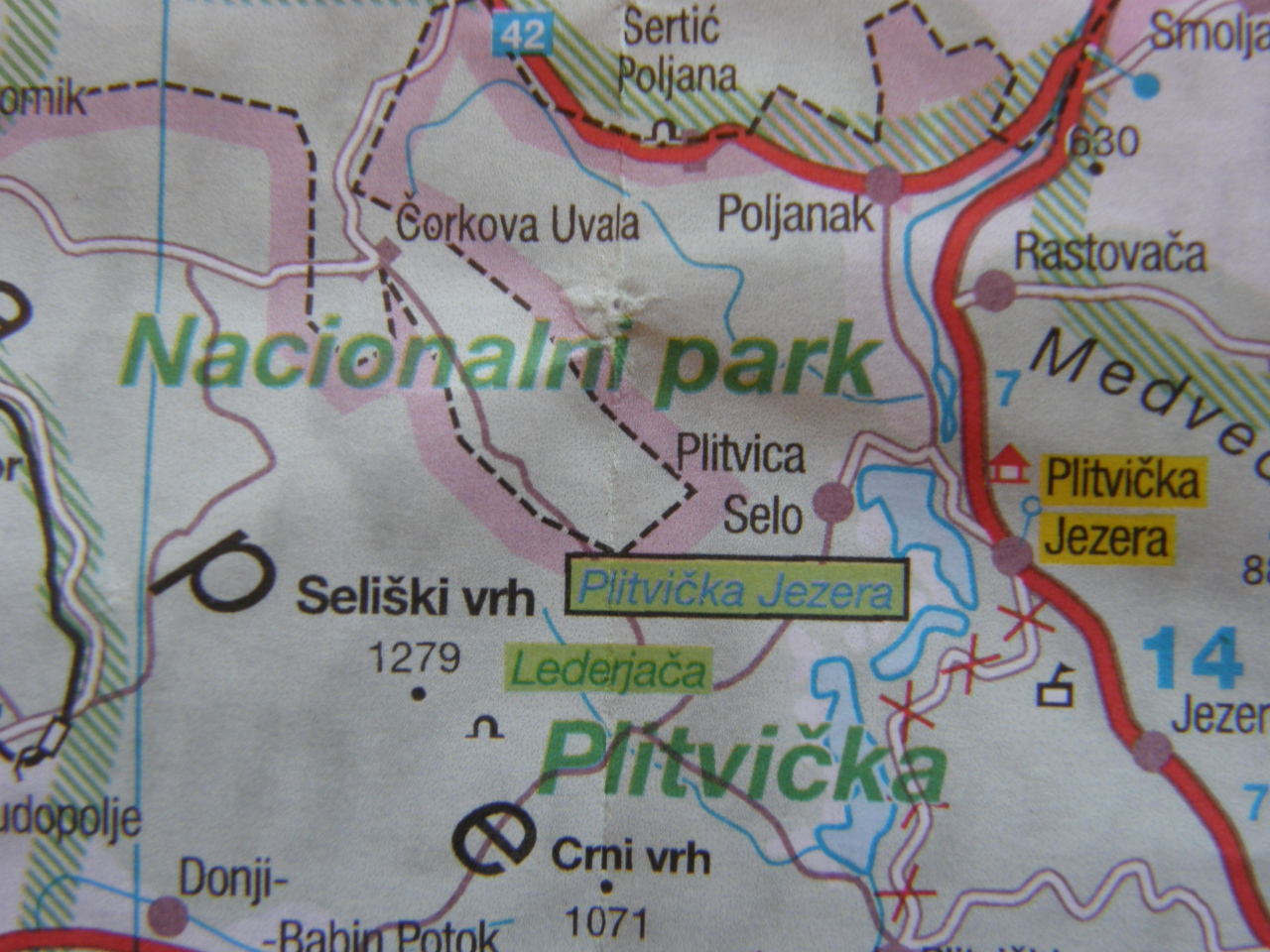
The map of the area shows a series of lakes separated by rapids and waterfalls on the major stream that flows down the main valley.

This is a perspective view of the situation portrayed on the previous map.
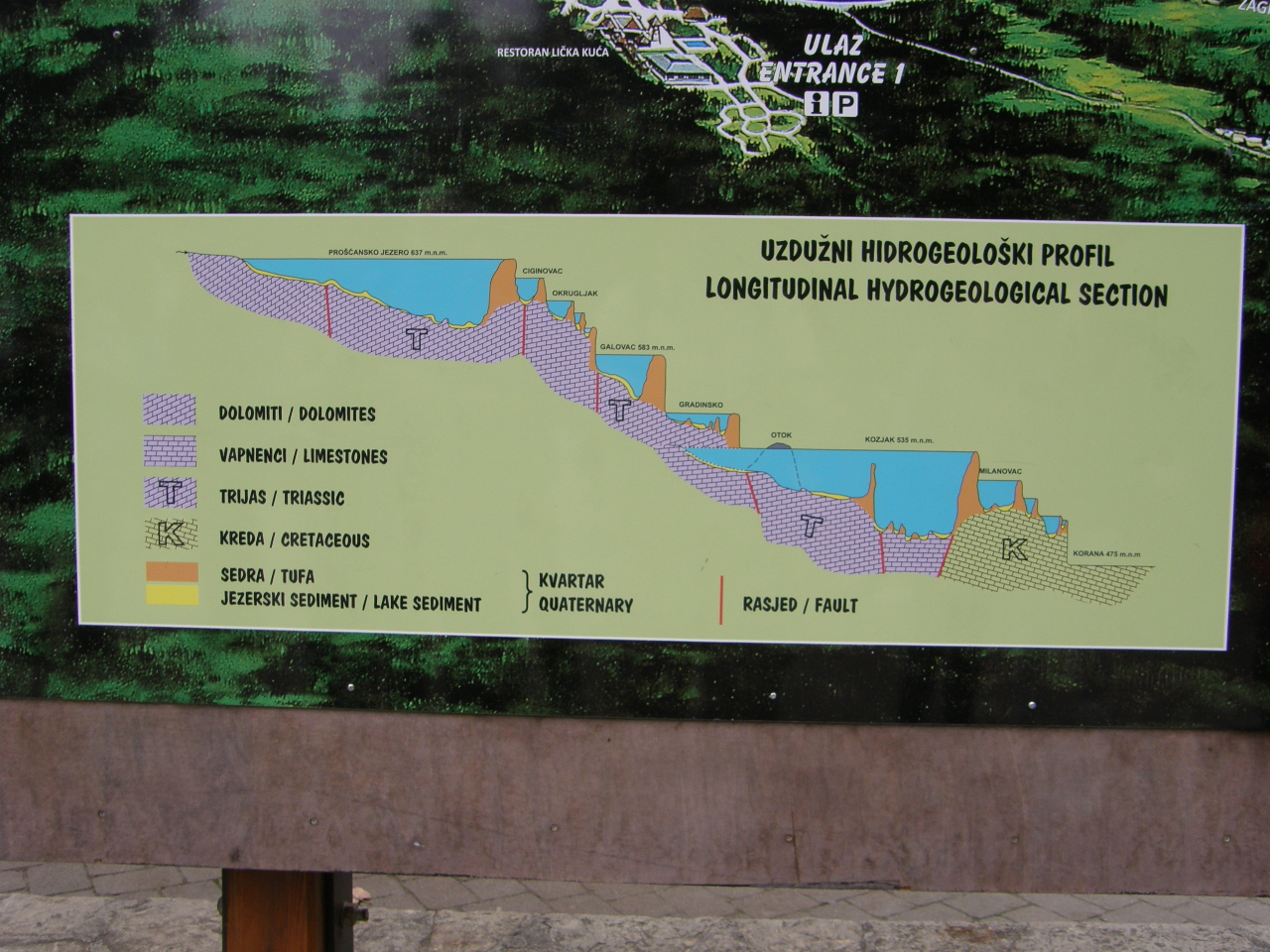
The water in the stream emerges upslope from the park as springs and is supersaturated in dissolved calcium carbonate (the mineral calcite) and as if flows downstream it creates deposits of calcite as dams which grow progressively as a rock that we name travertine. Thus, the dams and the lakes behind them grow upward through geologic time, sometimes leaving massive deposits of layered travertine which has been mined and has been commonly used as flooring and wall covering materials.

There are waterfalls and/or rapids from upstream lakes that form behind the travertine dams to the next lakes downstream.
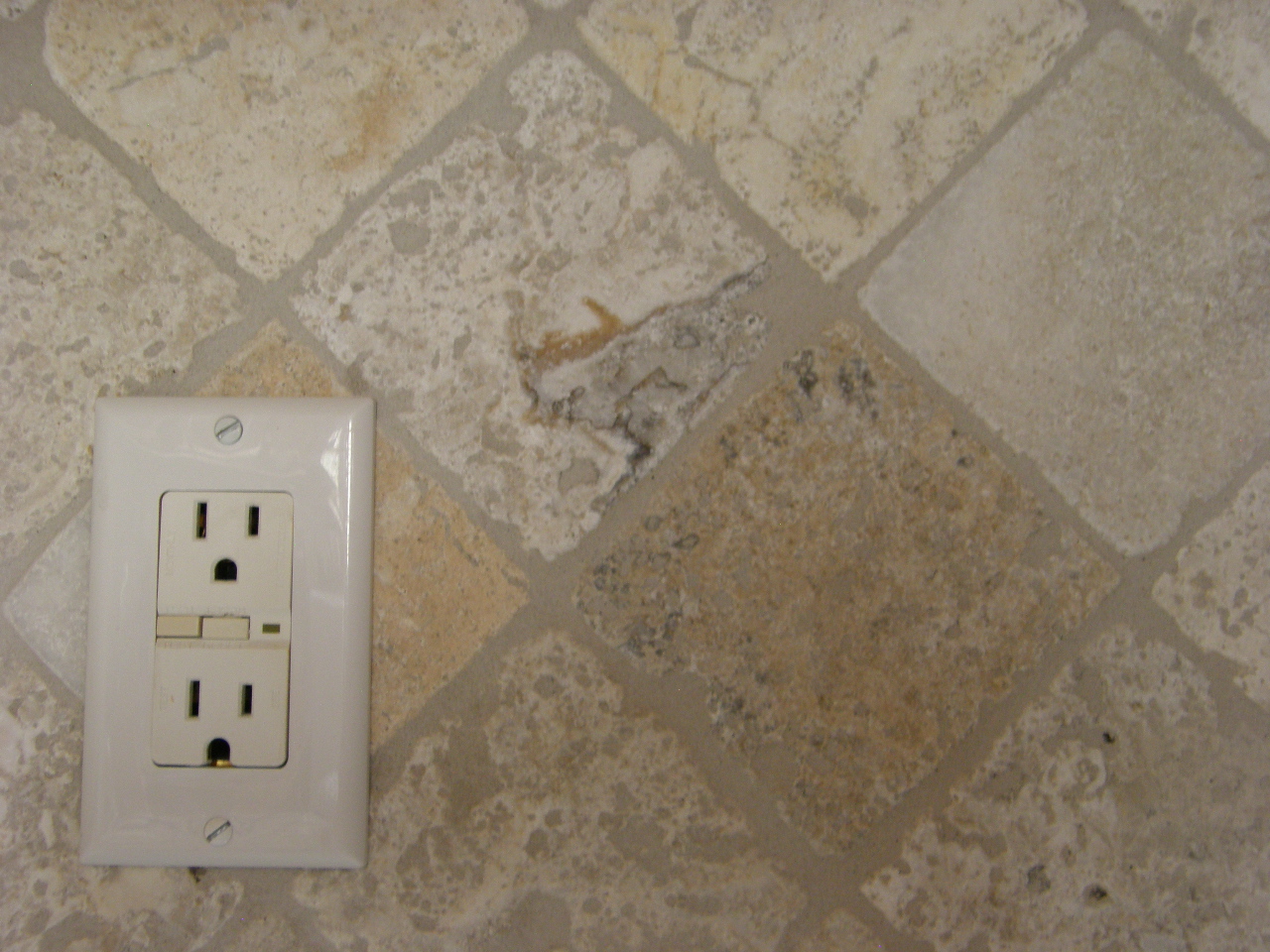
These are 4-inch square pieces of travertine that are part of my kitchen counter backsplash. Notice how vuggy they are (a vug is a cavity or hollow in a rock). The grout is applied to fill the spaces between the tiles but also to fill some or all the vugs, creating an interesting variation in both color and texture.

These are 16-inch square travertine tiles that floor my entire house. They were mined from travertine deposits in Turkey. Notice the variation in color due to its deposition in water, where the calcite is often mixed with various amounts of organic materials. Notice also the vugs in the tiles, some of which have been partially or completely filled with the same grout that also was used to fill the spaces between the tiles. Travertine is made of calcite, which is a soft mineral, so travertine is a relatively soft rock.
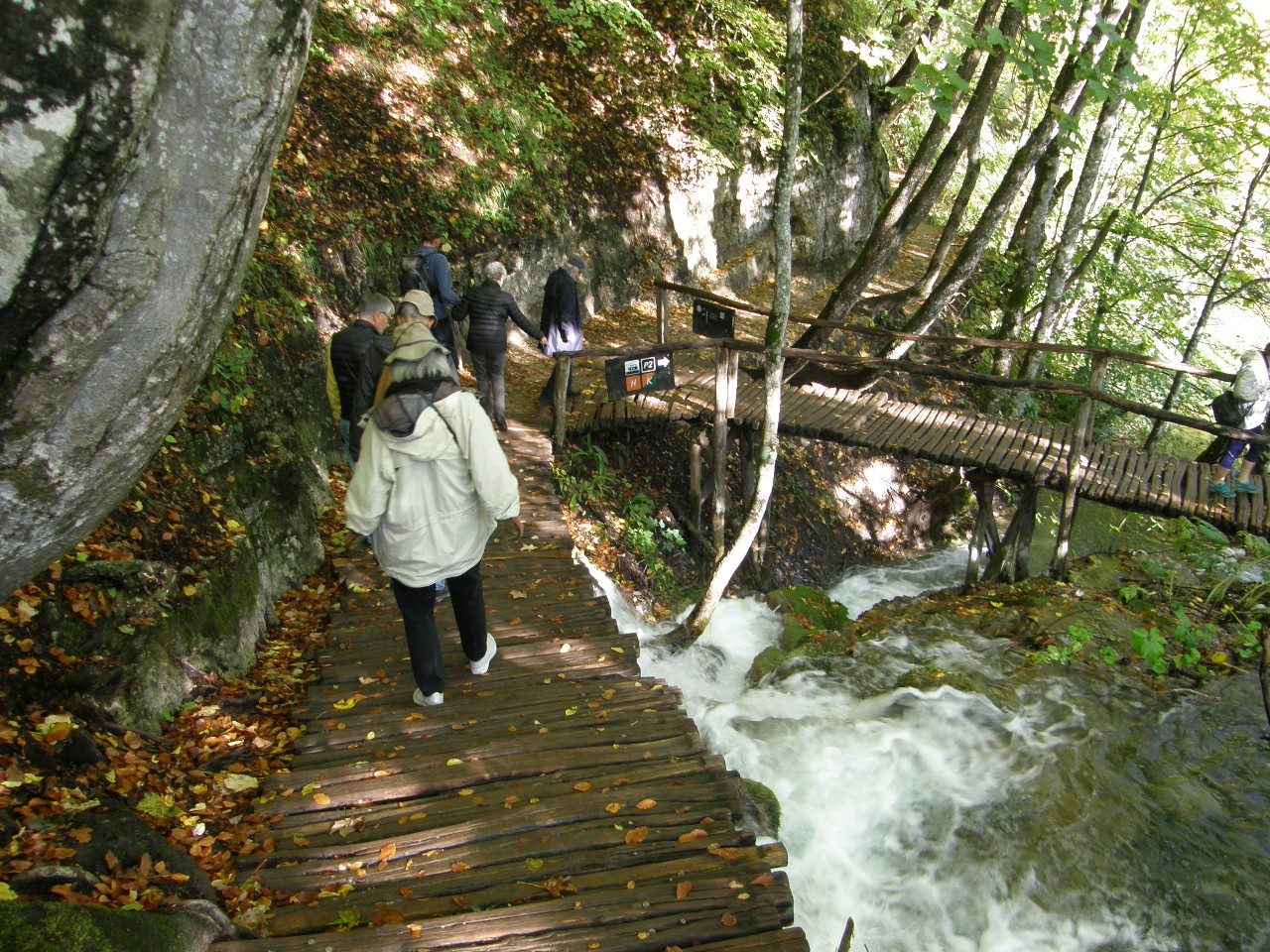
Back to Croatia: The natural wood walkways are actually built over the flowing streams.
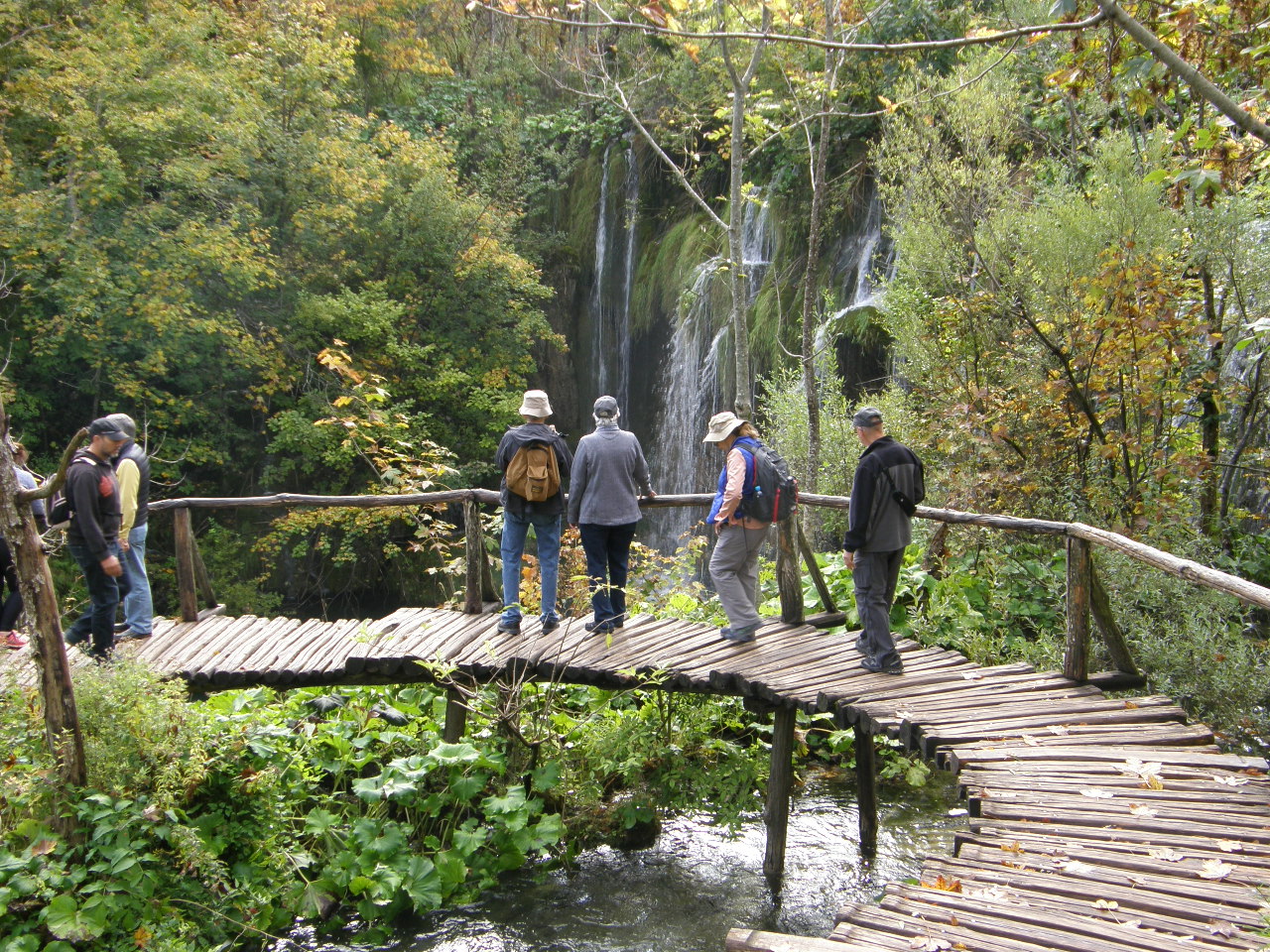
There is a beauty to this park that is unique and, I think, profound.
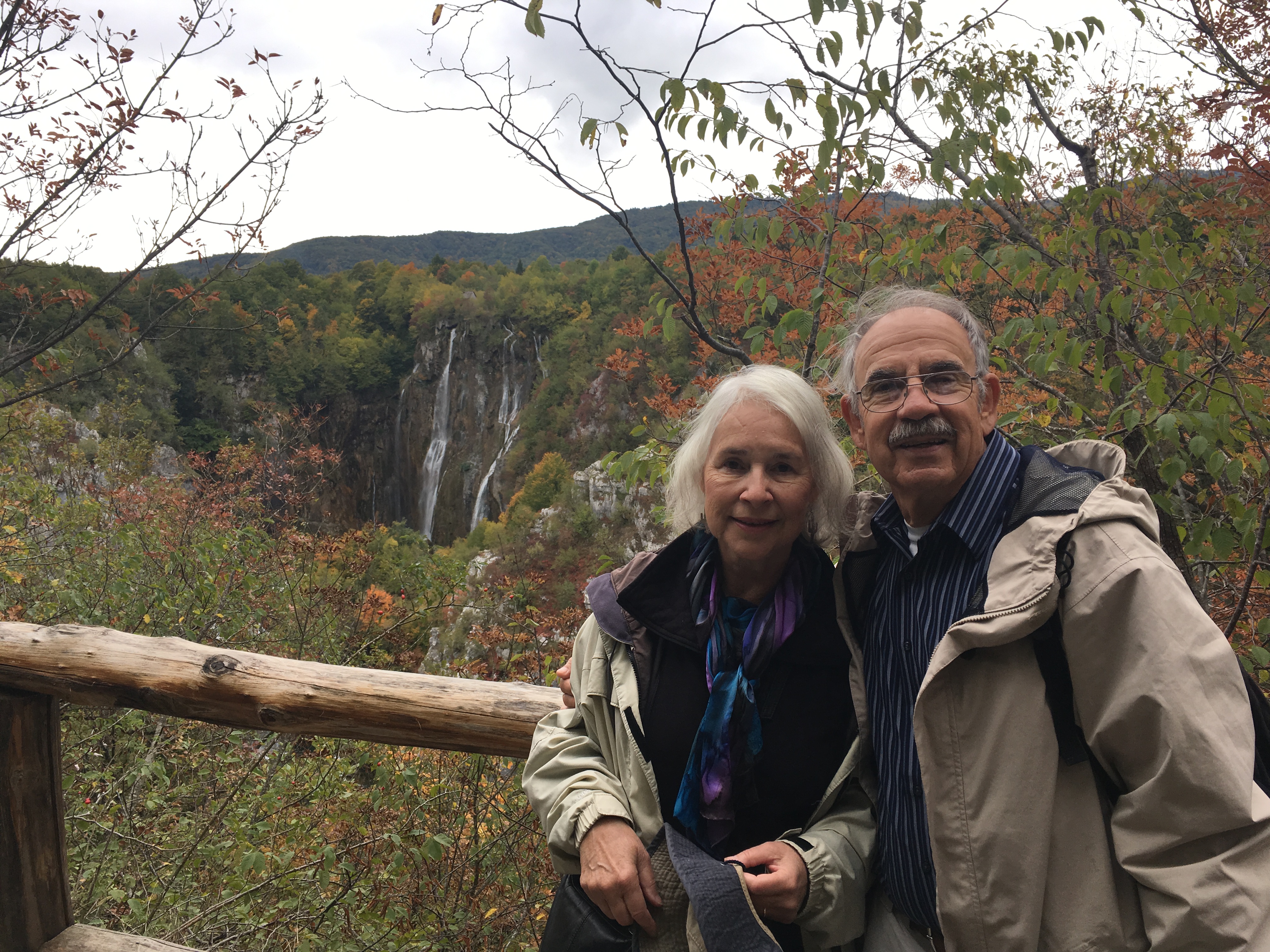
This is Jane and me at the end of our park tour. We both feel that if you can travel to Europe only once, and see only one country, the country we would recommend would be Croatia. If you get to Croatia, please try to visit Plitvice Lakes National Park.
The following are suggested references to travertine and the geologic circumstances that result in its formation and properties:
https://www.naturalstone.co.uk/blogs/news/the-origins-of-natural-stone-where-does-travertine-come-from
and
https://sefastone.com/travertine-tile-pros-and-cons
and
https://en.wikipedia.org/wiki/Travertine
and
https://blogs.agu.org/georneys/2011/04/15/geology-word-of-the-week-t-is-for-travertine/
and
https://sefastone.com/travertine-hot-springs-formation-location-and-extraction/